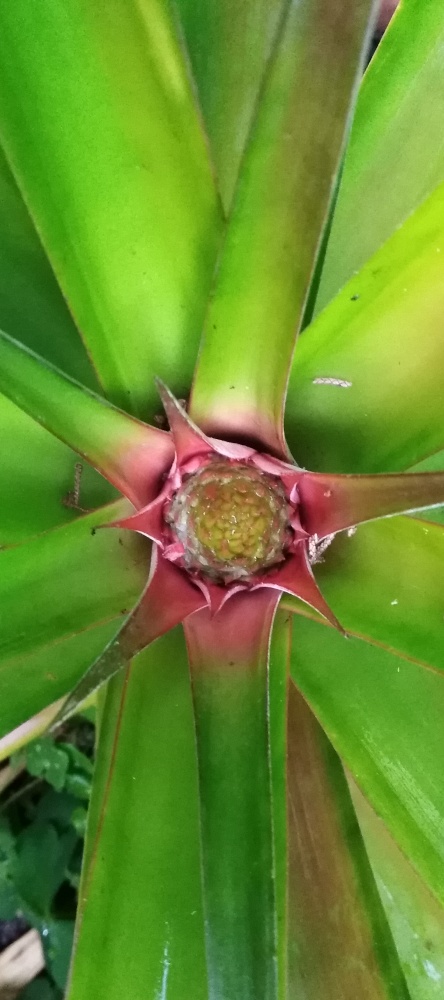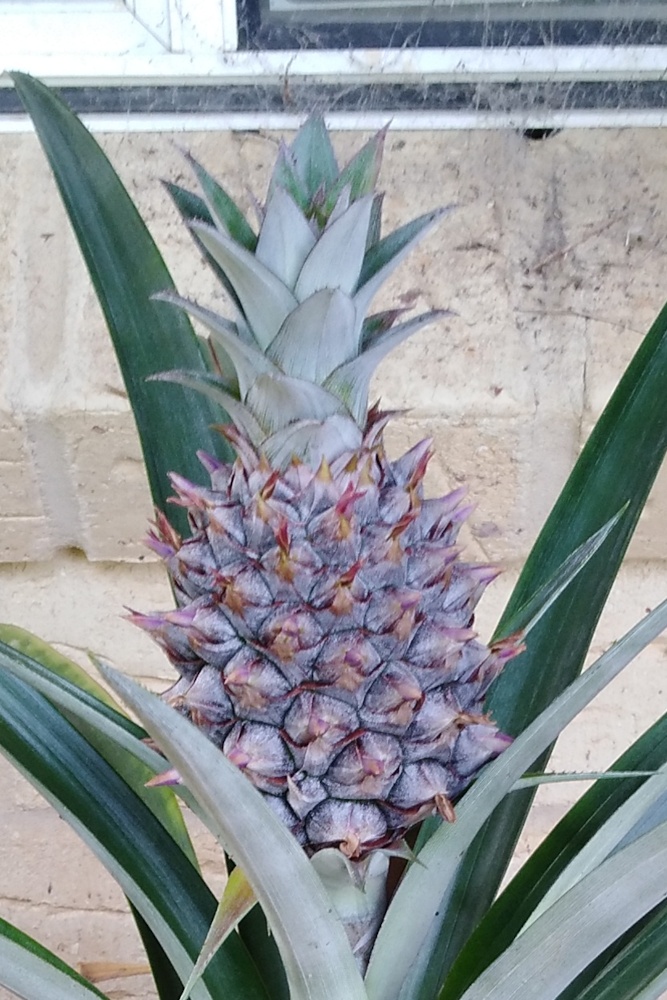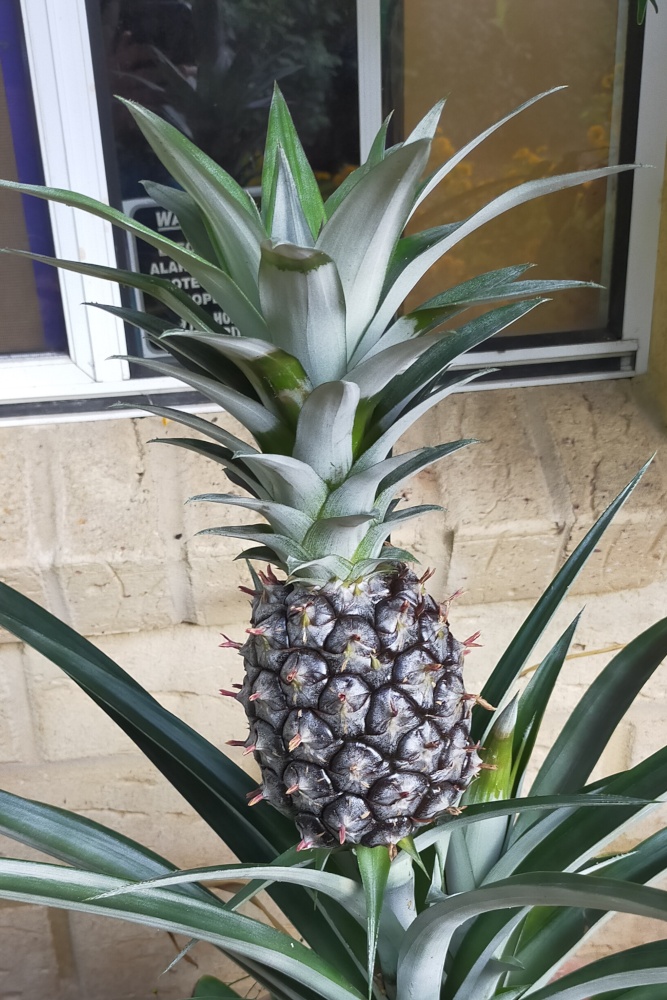Overview
Ananas comosus, cv. Common


Other names: N/A
Pollination: self-fertile
I grew this pineapple from the crown of a store-bought fruit, and from what I have read, 73-50 seems to be the standard in Australian supermarkets, though it could also potentially be Smooth Cayenne. As I can't be sure of the variety, this page is more of a detailed informative page on pineapples rather than on the specific variety.
I have successfully grown
pineapples in both pots and the ground, with both methods taking around three years to produce fruit. The advantage of pots is that they can be sheltered in the winter, though I have since given up on this due to the space I can save in
the ground. Pineapples can tolerate periods of dryness and soils lacking in nutrients, though they respond well to foliar fertilisation, taking most of their nutrients and water through the leaves.

Buds
You may be able to predict bud formation by the widening of the central part of the pineapple plant, where the new leaves begin to form. This is followed by a spikey mass that begins to grow into a baby pineapple, surrounded in red in the case of this variety. The collection of buds begins concave relative to the plant, before becoming flat and finally convex as they get ready to flower.



Flowers
As the spikey mass starts to resemble a baby pineapple, each of the spikes puts out a small purple flower, generally from bottom to top. During this time, the crown begins to emerge, and the fruit continues to grow. The flowers soon wither, though they remain on each of the portions that make up a pineapple, which are technically berries.


Fruit
After pollination, the fruit slowly plumps up, though this can take quite some time, especially in winter. Eventually, the fruit will begin to turn yellow, which is a sign it is close to picking. Ideally a pineapple should be left until it is completely yellow for optimum taste, though this is usually not practical as it will develop a strong scent that can attract pests. I usually try to wait until roughly two thirds of the pineapple have changed colour, and this is adequate for a sweeter and less acidic taste than you would expect from a store-bought pineapple.

